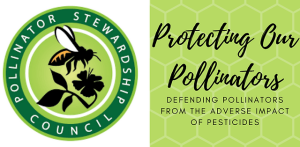 For more information go to The Pollinator Stewardship Council https://www.pollinatorstewardship.org/
For more information go to The Pollinator Stewardship Council https://www.pollinatorstewardship.org/
PSC Advocacy Efforts Lead USGA To Save Its Pesticide Map
The Pollinator Stewardship Council has successfully petitioned the US Geological Survey (USGS) to safeguard the future of a crucial resource- the USGS Pesticide Map. Thanks to our combined efforts with other organizations, the USGS has decided to reverse its earlier decision and reinstate vital cuts made to this essential resource. The USGS pesticide mapping initiative involves the systematic collection, analysis, and visualization of data related to the distribution and usage of pesticides across the United States. This comprehensive effort aims to monitor and assess the environmental and public health impacts of pesticide use, as well as support regulatory compliance, scientific research, and policy decision-making. This data plays a crucial role in promoting environmental stewardship, protecting public health, supporting regulatory compliance, advancing scientific research, and informing policy and decision-making related to pesticide use and management.
2019 budget cuts drastically reduced the scope of pesticide mapping and data, slashing the number of tracked pesticides from approximately 400 to a mere 72. The USGS pesticide mapping data is ESSENTIAL for pollinator protection as it helps identify areas where pollinators are at risk of pesticide exposure, monitors habitat contamination, and assesses the impact of pesticides on pollinator health. This data informs conservation strategies, supports policy advocacy, and raises awareness about the importance of pollinator conservation among stakeholders.
In response to recent advocacy, the USGS has committed to fully restoring the lapsed pesticide data by 2025. Furthermore, they pledge to resume annual updates for the complete range of 400 or so pesticides. While we are eagerly awaiting specifics on when in 2025 these updates will occur, it’s imperative given that the existing usage data are already six years old.
For those interested, the updated announcement can be found on the mapping website linked here: USGS Pesticide Mapping Website.
Unfortunately, it’s worth noting that data on seed treatment will not be restored at this time. The USGS claims that their data source no longer collects this information. However, upon investigation, we’ve found this assertion to be somewhat inaccurate. As such, we will be persisting in our efforts to advocate for the reinstatement of these crucial data.
Reguardless, today we celebrate this significant victory. It’s a testament to the power of collective action and advocacy. While challenges remain, let’s revel in this achievement and continue to push for the preservation of vital environmental resources.








